How are live and recorded online classes different?

This is the second of three chapters about Teaching Online. To complete this reader, read each chapter carefully and then unlock and complete our materials to check your understanding.
– Review the concepts of online, blended and hybrid learning
– Explore tips for synchronous online teaching and learning
– Explore tips for asynchronous online teaching and learning
Chapter 2
You’ve probably found this short reader because you’re preparing to teach online and are a little unsure about how to do that effectively. Particularly since COVID-19, most recent academic cohorts will have seen much more blended tuition than their predecessors, with major universities taking some courses entirely online. So what can you do as a teacher to adapt your classroom content to meet the demands of the twenty-first century? Chapter 2 uses five key aspects of lesson planning – content, duration, engagement, availability and accessibility – to explore the different ways in which asynchronous (recorded) and synchronous (live) classes can be improved.
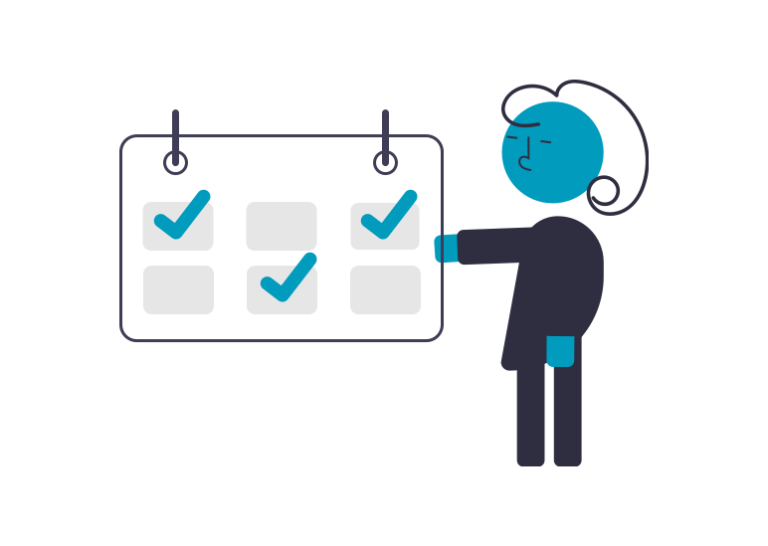
1. Asynchronous Teaching
Asynchronous (recorded) content can have many benefits for teaching and learning at the undergraduate level. When using pre-recorded materials, students are able to learn at their own pace and select the best time to study. Such decision making is argued to empower learners, potentially resulting in increased engagement. Having a supply of recorded classes also means that a convenor possesses a repository of materials that can be repeated, repurposed and generally called upon at any time. The following tables list the main considerations that help guide class planning:
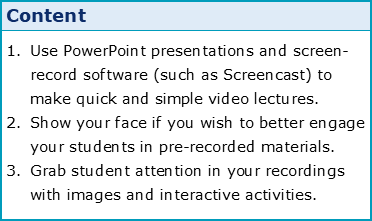


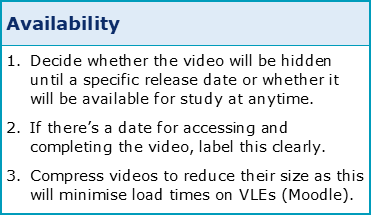
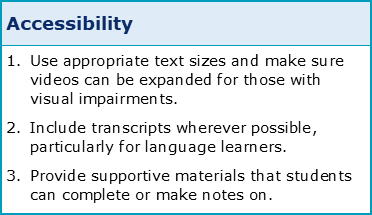
In designing materials for asynchronous online teaching, tutors are in charge of remotely guiding their students’ autonomous learning. Without clear guidance, very little may be completed successfully or in the manner you expect. Tutors must therefore carefully consider the organisation, style and order of their content, providing instructions on a VLE such as Moodle that help to navigate a student through the course correctly and without confusion. When recording, uploading and hosting materials online, it might then be a good idea to ask yourself (and respond to) the following questions to ensure learner success:
- Will the learner know precisely what to do and when?
- Is moving from one task or video to the next simple and well signposted?
- Are the expected learning outcomes of the course clear?
- Do learners have the necessary technology to view these materials?
- Are details provided for what to do in case of technical issues?

2. Synchronous Teaching
Once you’ve decided which content is static and can be recorded in your module, the next challenge is to consider how to facilitate synchronous (live) online lecture and seminar interactions. This will only be possible of course if the timezone you are in overlaps acceptably with that of your students. To help tutors consider the most important aspects of this format, we’ve provided another series of tables below:
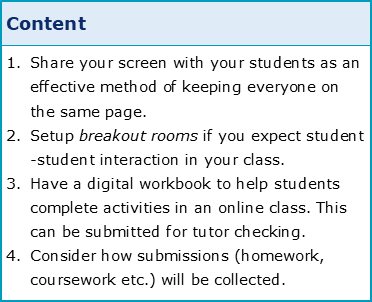
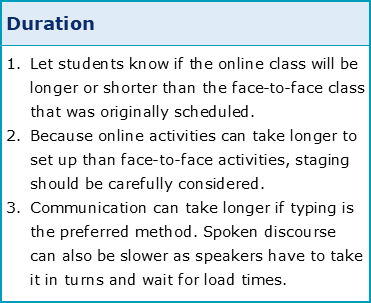

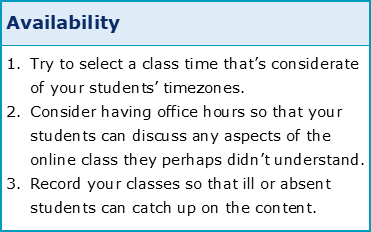
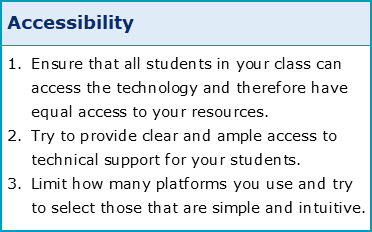
Ultimately, the selection and balance of synchronous and asynchronous teaching, though influenced by your teaching philosophy and experience, is most often determined by the requirements of your department. Course convenors may decide to allow flexibility in this or mandate a fairly prescriptive approach to ensure standardised delivery, or they may remain agile and modify the course as it progresses. Either way, now that you have a better idea of which aspects to consider when teaching online, you may wish to continue reading with Chapter 3 where we discuss some key tips for ensuring successful online interactions.
To reference this reader:
Academic Marker (2022) Teaching Online. Available at :https://academicmarker.com/academic-guidance/teaching-and-learning/digital-learning/teaching-online/ (Accessed: Date Month Year).
Downloadables
Once you’ve completed all three chapters in this short reader about Teaching Online, you might then wish to download our Chapter Worksheets to check your progress or print for your students. These professional PDF worksheets can be easily accessed for only a few Academic Marks.
Chapter 1 explores the topic: Which steps help the transition to online teaching? Our Chapter 1 Worksheet (containing guidance, activities and answer keys) can be accessed here at the click of a button.
Chapter 2 explores the topic: How are live and recorded online classes different? Our Chapter 2 Worksheet (containing guidance, activities and answer keys) can be accessed here at the click of a button.
Chapter 3 explores the topic: Which tips ensure successful online interactions? Our Chapter 3 Worksheet (containing guidance, activities and answer keys) can be accessed here at the click of a button.
To save yourself 2 Marks, click on the button below to gain unlimited access to all of our Teaching Online Chapter Worksheets. This All-in-1 Pack includes every chapter, activity and answer key related to this topic in one handy and professional PDF.
Collect Academic Marks
-
100 Marks for joining
-
25 Marks for daily e-learning
-
100-200 for feedback/testimonials
-
100-500 for referring your colleages/friends